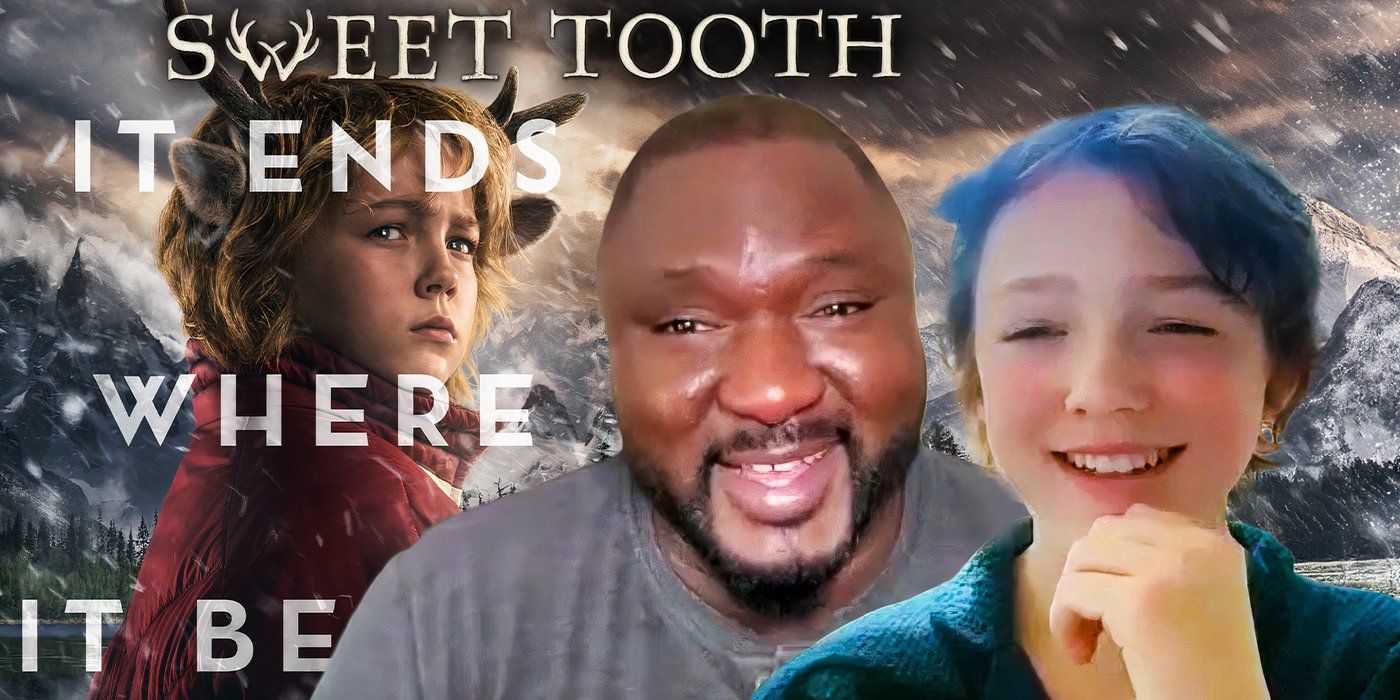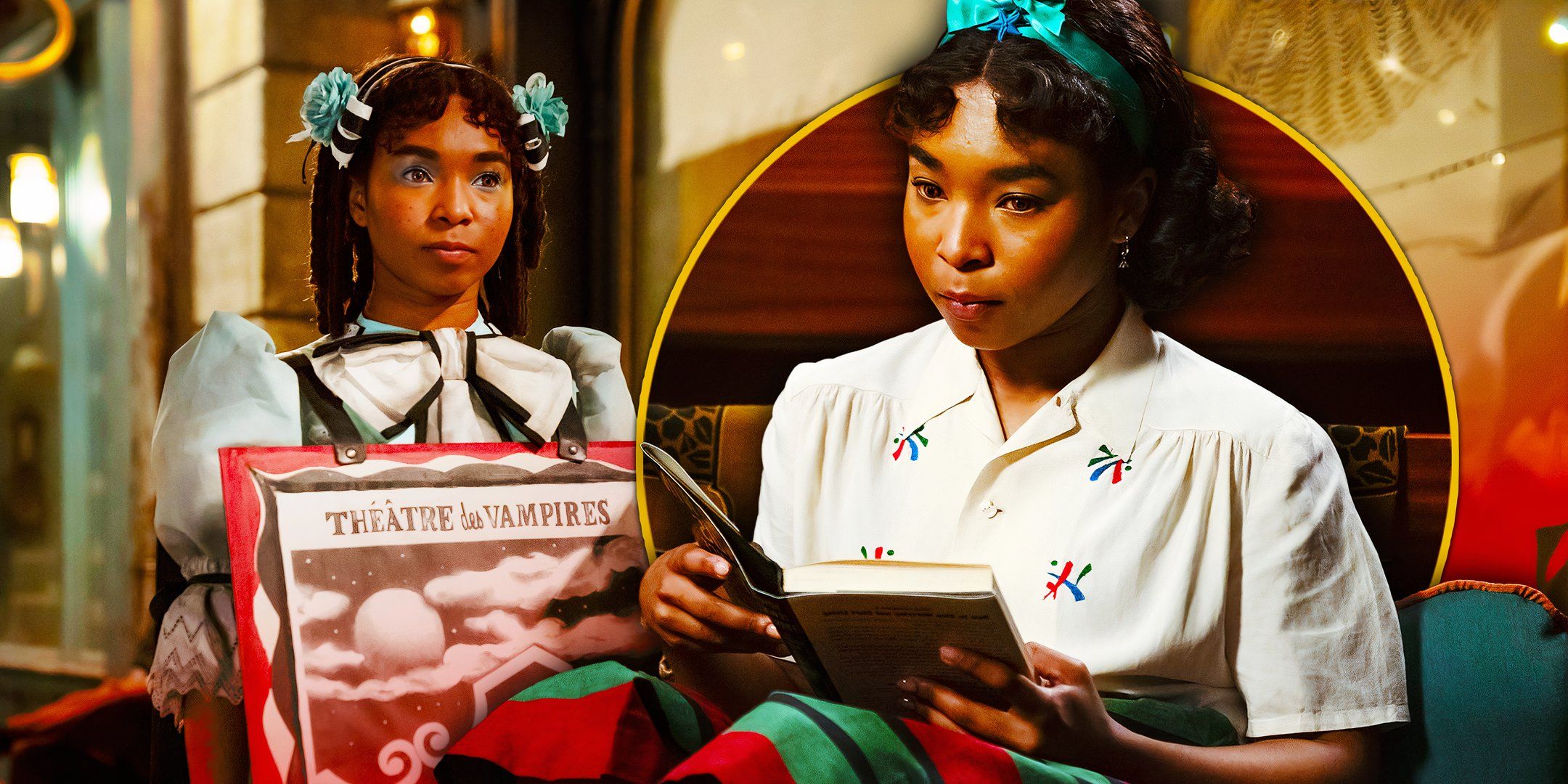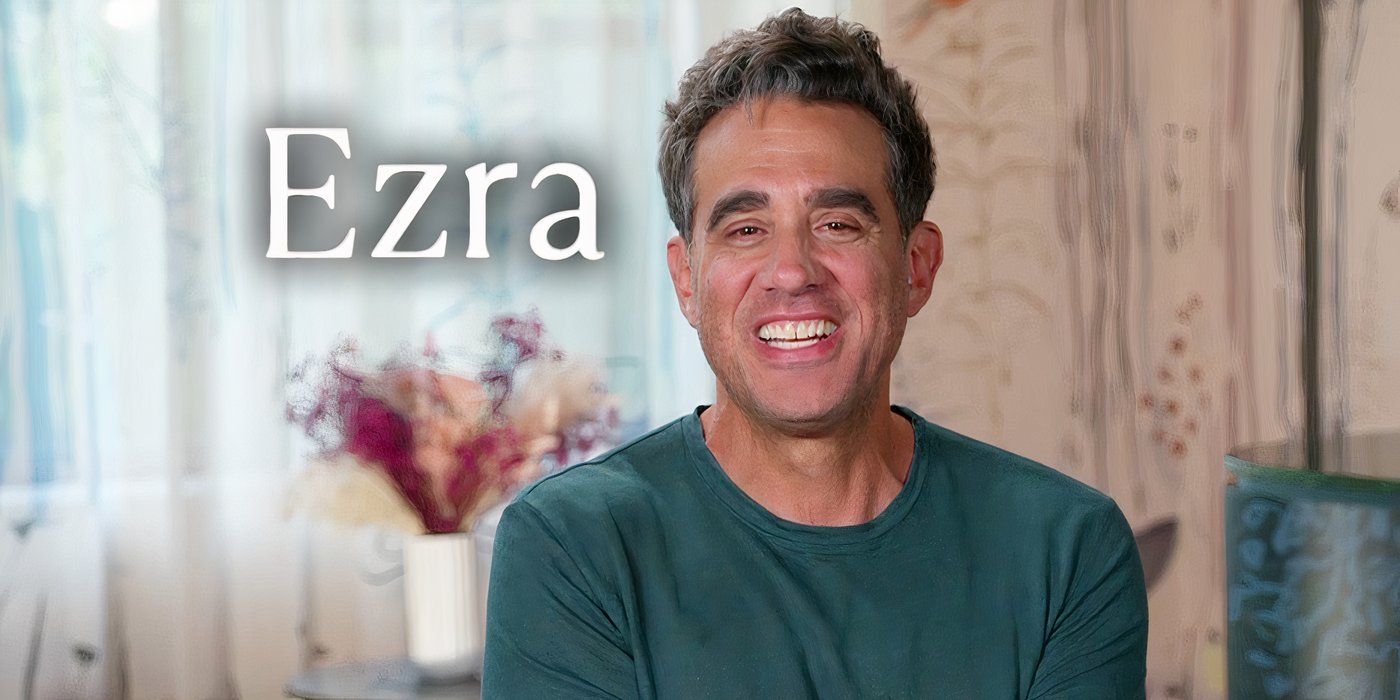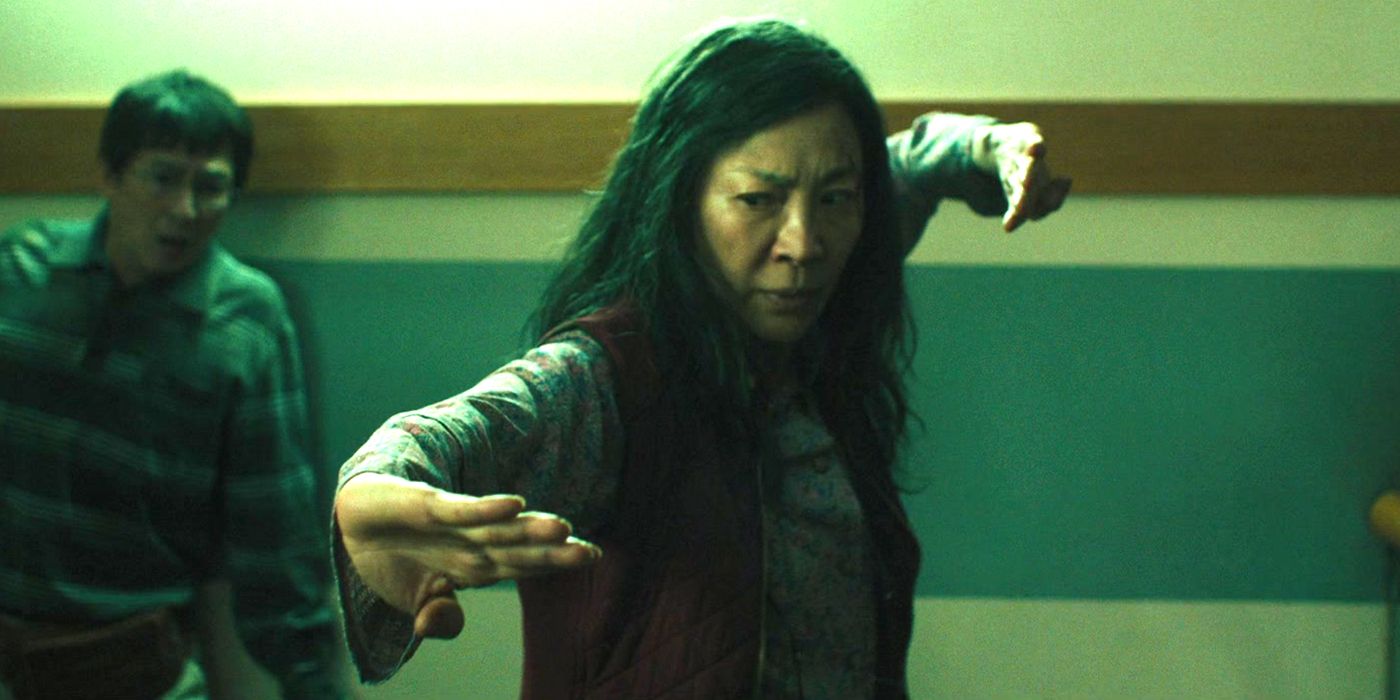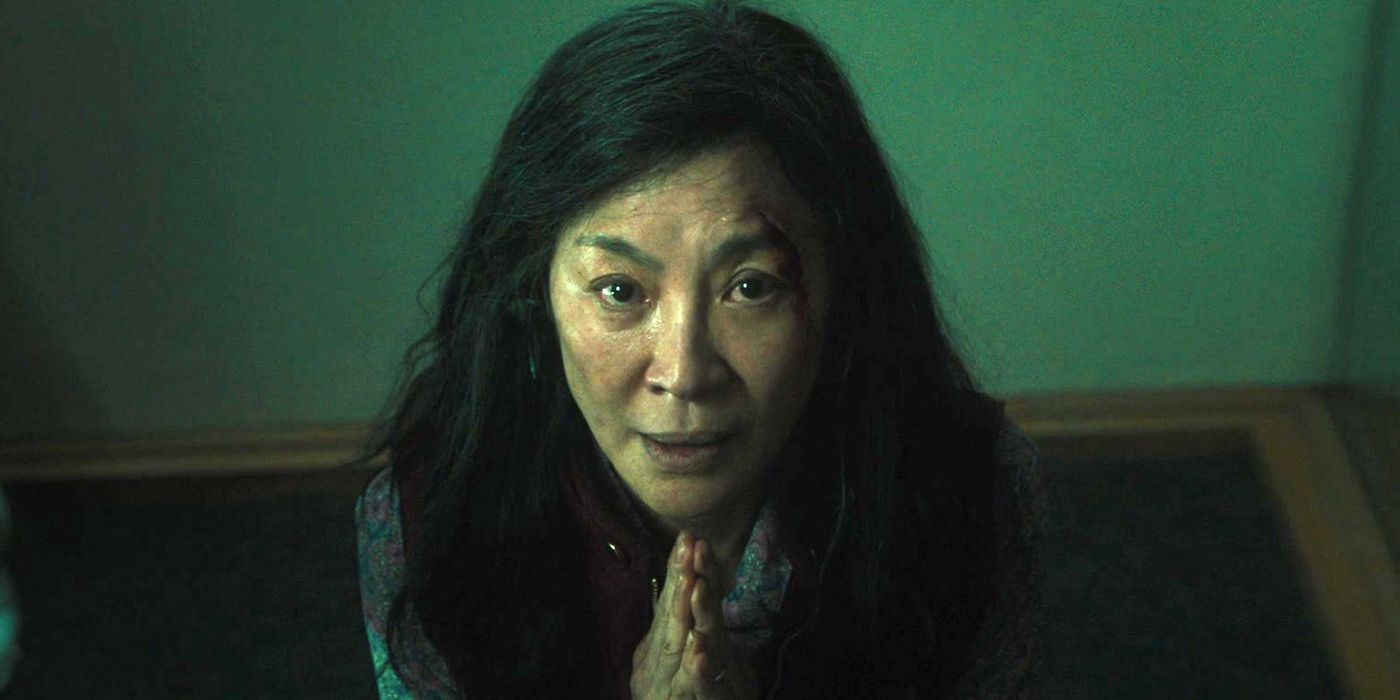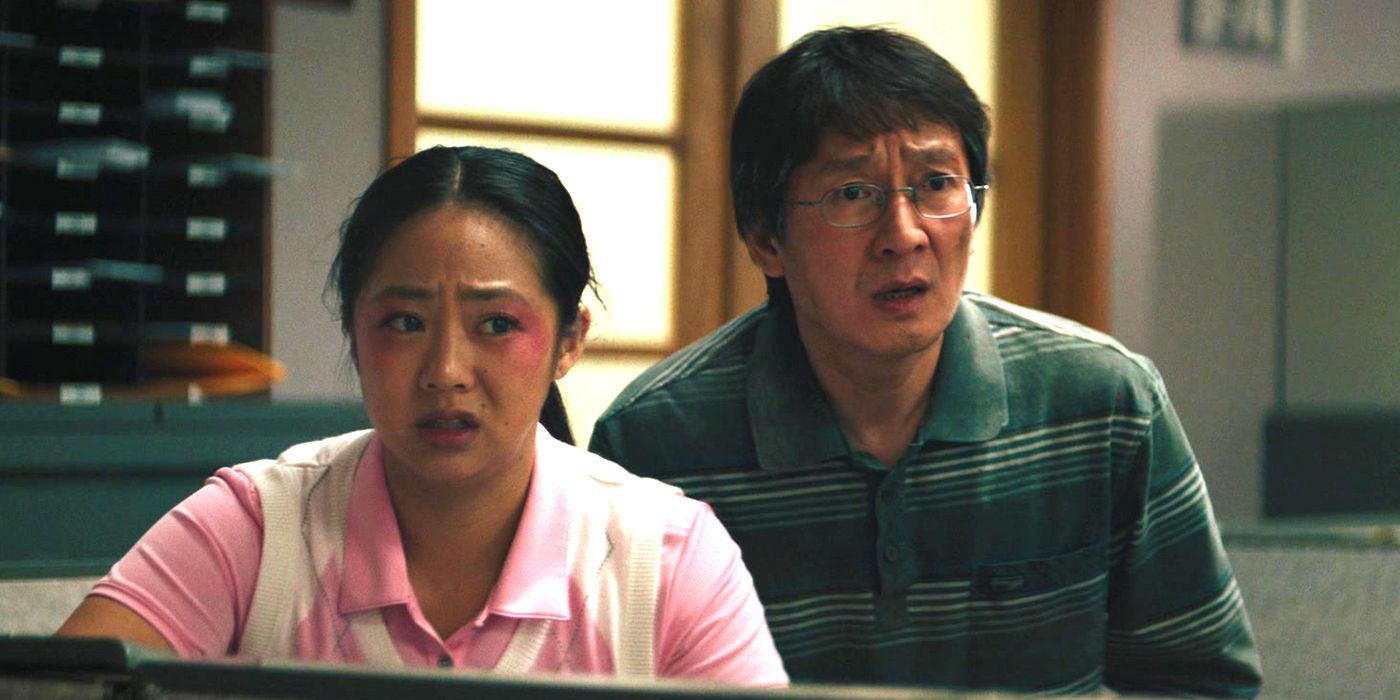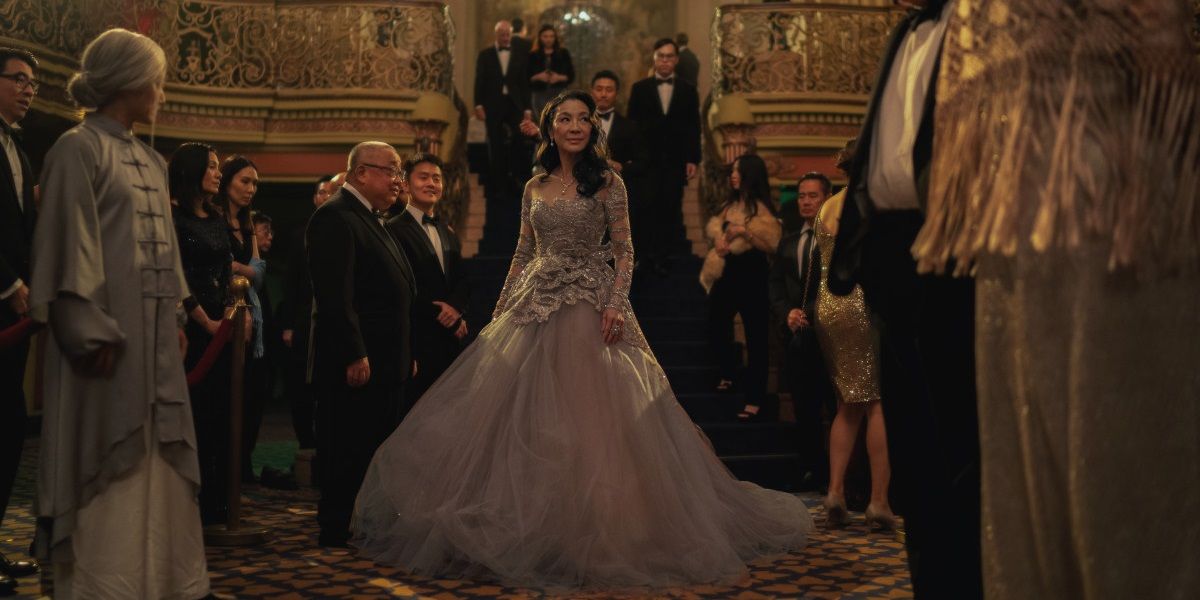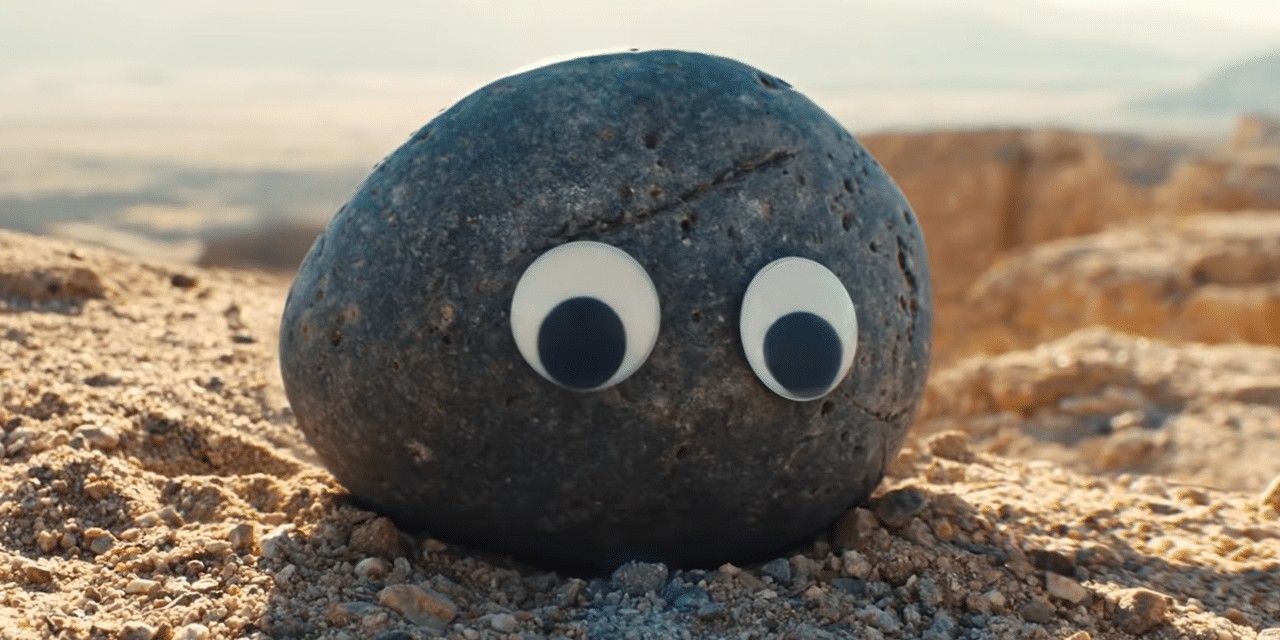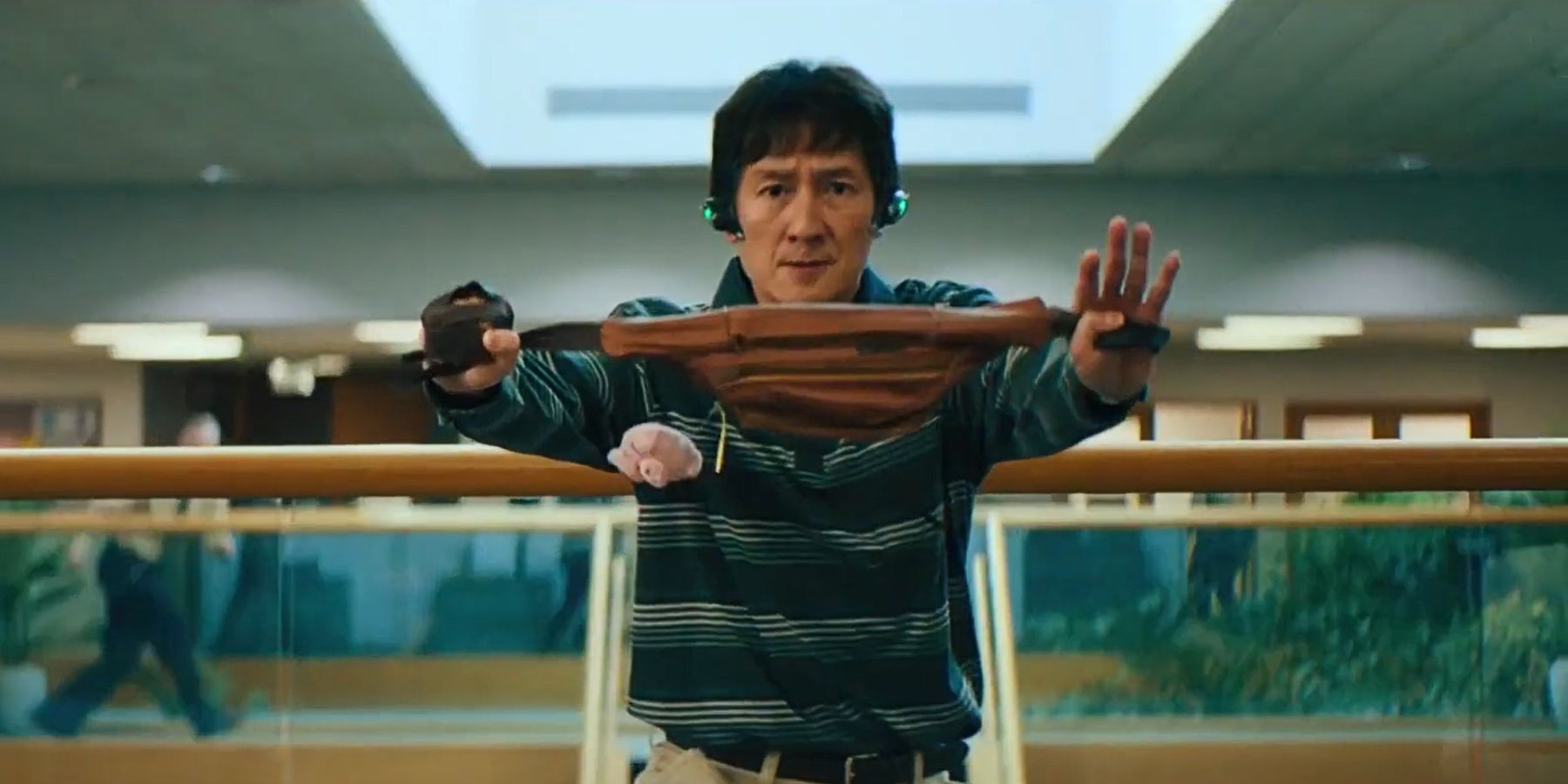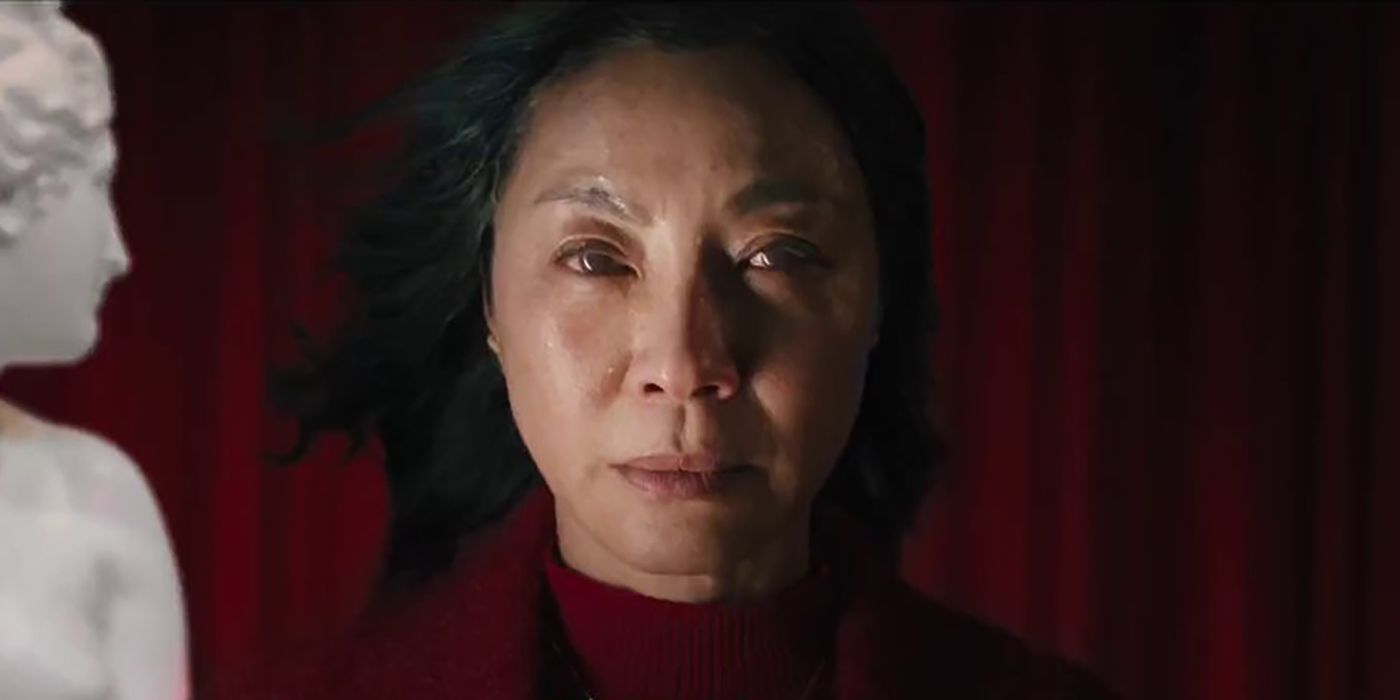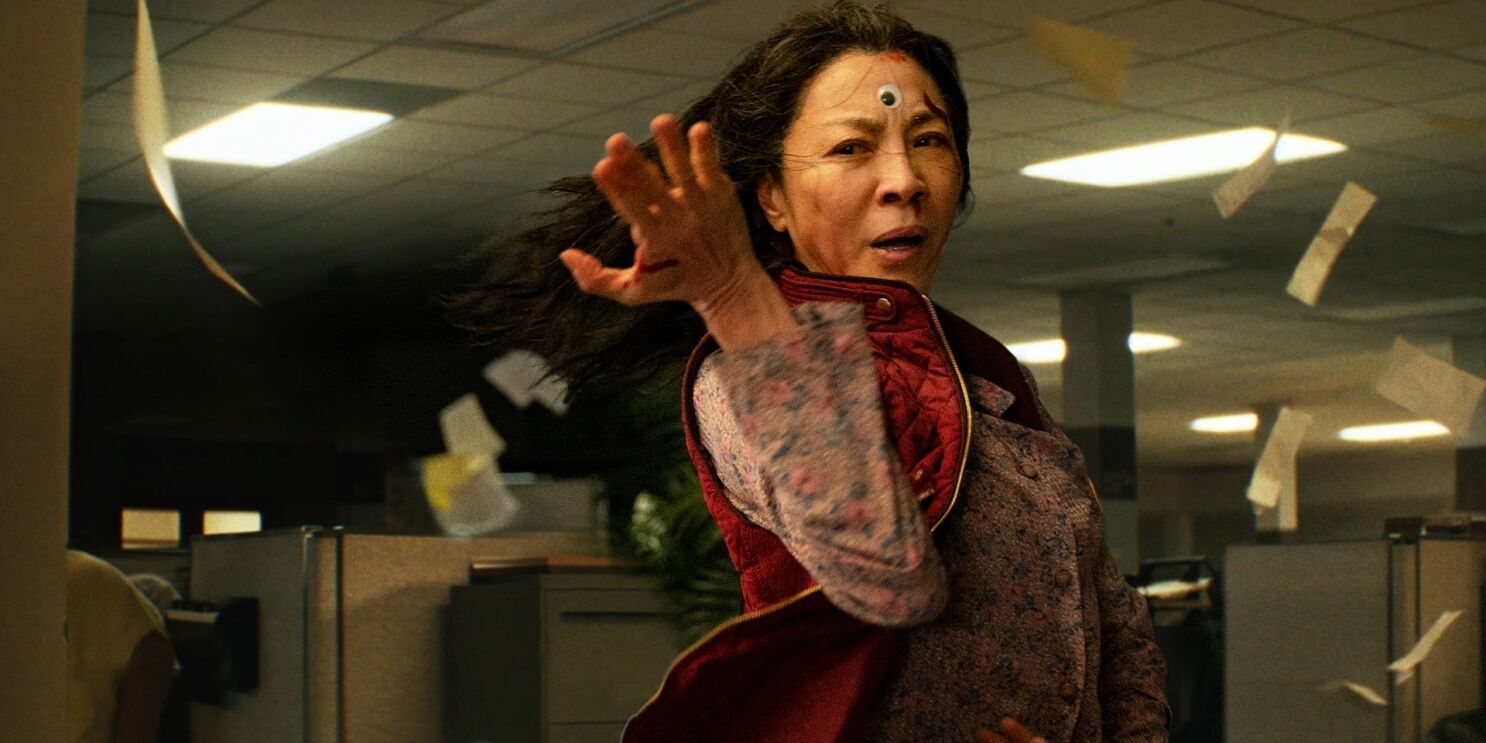Even with an infinite universe of possibilities, family is always where the heart lies, as seen in Everything Everywhere All at Once. Hailing from the Daniels, the duo behind the off-beat Swiss Army Man, the exceptional film revolves around laundromat owner Evelyn Quan and a trip to the IRS to clear up taxes that becomes a mind-bending journey through the multiverse. Soon, she becomes tasked with connecting to the parallel universe versions of herself and tapping into their skills in the hopes of stopping the powerful being known as Jobu Tapaki from destroying the multiverse.
Michelle Yeoh leads the star-studded cast of Everything Everywhere All at Once alongside Stephanie Hsu, Ke Huy Quan, Jenny Slate, Harry Shum Jr., James Hong, and Jamie Lee Curtis. Fully tapping into its imaginative premise while also grounding audiences in a heartbreaking family drama, the film has more than earned its six Golden Globe nominations, of which it won two, and its 11 Oscar nominations.
In honor of the film's upcoming Oscars run, Screen Rant spoke exclusively with cinematographer Larkin Seiple to discuss Everything Everywhere All at Once, the challenges and joys of crafting different universes, Easter eggs hidden in the parallel realities, and more.
Seiple on Everything Everywhere All at Once, Easter Eggs & More
Screen Rant: Everything Everywhere All at Once was a mind-bender from start to finish. You have a history with the Daniels going back to the music video days, and I know this is a project they've been working on for quite a while. When did you first hear about them putting this together?
Larkin Seiple: I heard about it probably from the very beginning of it. The Daniels are very interesting, and everything they do is kind of curious and intriguing, so I think they're constantly being asked, "What are you doing next?" The funny part is they always have four things in the oven, just kind of cooking away.
But they had been talking about this for a while. They started talking about the idea of universe jumping, and the absurdity of it was what they were falling in love with. They kind of told me the pitch, or the catch to the idea behind it, but not fully the actual emotional story of it. The most fascinating part of it was hearing this very silly concept, and then actually hearing that the bones of it were something heartbreaking and true.
What was the biggest goal that you and the Daniels had when depicting this very emotional and out-there story?
Larkin Seiple: The goal is to make people believe what they're watching is real, even though it's incredibly silly. It always feels like a very elaborate prank in a weird way because you really want people to believe it's happening. The idea only works if you accept and embrace it, and if you remotely think it's fake or shallow, or you can tell what's coming around the corner, then it doesn't work. A lot of my job is to try to ground things and make things more subtle and less obvious.
A lot of that is visually trying to downplay some of the beautiful sets, or some of the bigger choices that the directors or the actors make, with my lighting or camera work. That way, it can be big and loud but, at the same time, you can relate to it and not feel like you're just watching a farce. Watching a Naked Gun movie, if you will. The goal is to try to bring back the elements of humanity to it, that's ultimately the other part of it was just trying to pull it off.
It was really tricky. We only have about 36 days to make it, and it's an action movie, so you're dealing with wire work and stunts and explosions. That stuff is really slow to shoot on set, so a lot of our job was just trying to figure out how we can pull things off, which basically just meant running around the building with two cameras and going crazy. [Chuckles]
One of the things that I love about the multiverse nature of this film is that each universe feels visually different. Was that the specific goal, trying to find different visual aesthetics for each universe, or was that something that came about naturally as the sets were built?
Larkin Seiple: It was two-part. The first goal was to try to anchor all the universes emotionally; what they're about, what they feel like, and the subtleties of it. The main universe is supposed to feel as real as humanly possible, and that evolves into what we call the "Action Universe," so it drops down and becomes anamorphic. There's a Die Hard vibe, so it's still lit practically, but there's an edge to it like a survival film, in a way.
And then the other universes are a bit more subtle. The "Taxes Universe" is where Evelyn just goes back and does her taxes and nothing happens, and that's the moment they have the New Year party and she kind of loses it and gets drunk, tells everyone she hates them, and that she doesn't love her husband. For that one, we played up red a lot, because there was this real burning anger in her simmering below the surface. But, as they evolved, the other part of it was so that you could tell them apart when we were cutting between them. Some scenes, we're cutting every 10 seconds between the universes. We started making a rule, not about what the universes should be, but what they shouldn't have.
Once we had the Taxes Universe, most of the other universes were like, "The color red can't be in there, that is for Taxes Universe." In the "Movie Star Universe," or the Wong Kar-wai universe, we push that green and yellow. We wanted that to feel more romantic in a weird way. And then the Ratatouille [universe], we pushed more American classic '90s movies, like Magnolia, or Punch Drunk Love, and that was more blue and white with their costumes. All these things were discussed with multiple departments. Some universes, like "Raccacoonie," we saw the costume and were like, " That's it!"
We saw what Shirley [Kurata] had done and were like, "Great, blue and white, we're gonna go with that. That's going to be the theme." Same thing with some of the others. Evelyn's dressed in gold, and it worked really well with the green lighting for the Wong Kar-wai verse. But they all kind of found their way, and they evolved over time. I don't think we knew from the very beginning what we wanted; it took a little bit of playing around and trying things out.
Which would you say was your favorite one to help put together, and which would you say was the most challenging?
Larkin Seiple: I think my favorite is the Movie Star Universe, because I grew up watching a lot of Wong Kar-wai films, and we referenced a slew of different movies that he's done within that universe. We basically took the costumes from In the Mood for Love, and then the lighting and camera work is based more on Fallen Angels, or Chungking Express. Some of the framing is taken from Happy Together. That one was the most fun, and again, trying to pull off the step printing process to get that blurry shifting thing was a fun discovery. Previously, it was an optical process that you would do in post, so to be able to do it practically with digital cameras was really fun.
That was the most enjoyable, and we were all excited to create this very subjective imagery compared to the rest of the film, which is very blunt and in your face with very direct framing. You have to know all this information for the next scene to make sense.
The hardest universe to do... The "Rock Universe" was the most painful to do. We had to drive four hours south of LA with a crew of six. It was 115 degrees, we got cars stuck in the sand, we had to bring all this stuff out there, and we had to shoot it in six hours. It was so hot. We had umbrellas, that's how painful the sun was. When the sun went down, it felt really cold and everyone could breathe, then we checked the temperature and it was 100 degrees. We felt cold in 100 degrees.
At the same time, that was also maybe the most fun. It was done guerilla style with an incredibly small team; everyone was doing everything, and it was very silly. It just felt very absurd to be out there getting sunburned and killing yourself, and then just to get these two rocks that are hand animated by the Daniels in a very simple manner. That was probably the trickiest one to shoot.
I was amazed at how much emotion I still felt coming out of that sequence. And as someone who's from LA, I know how that sun can get.
Larkin Seiple: We almost didn't do it there! They initially wanted to find somewhere closer, because we were going to shoot it while we were making the film originally, we were going to shoot just in a forest in someone's backyard, and I fought really hard to be like, "No, we're gonna go there. It needs to be this epic shot."
When COVID hit, it gave us the excuse to go and actually scout beautiful places, and also gave us the excuse to shoot it with a team of six. So, in another universe, that could have been a very boring Rock Universe. [Laughs]
You mentioned the Action Universe briefly, and it is pretty amazing how well that's shot. Of course, Michelle has her own history in that genre. How much did you and the Daniels speak with her and the choreographers to ensure that you were capturing the style you wanted to emulate?
Larkin Seiple: Oh, we got really lucky. The Daniels went rogue. We had Tim Eulich, who was our stunt coordinator, doing all the big hits and the explosions and the wire gags and the pulls. But for our fight choreography, we reached out to these YouTube guys, The Martial Club, who has been doing it for a while and were obsessive over any and every kind of Hong Kong-style action film, specifically Michelle and Jackie Chan. The Daniels called them and were like, "We're real people, we're not scammers. Will you please work on our movie with us and help us choreograph these fights?"
They were amazing, they were phenomenal, I think the Daniels sent them the fanny pack, fight, and walked them through what they wanted and the beats, and then the next day, The Martial Club had an eight-minute choreographed fight that they had already shot of all these extra angles we didn't ask for, and showed it to us, and we're like, "This is amazing, we need two minutes, we're gonna take this and this and this, and we're going to redo that." So, it was really cool, and that's how a lot of stunt teams work, you develop a fight sequence of a stunt team, and they'll actually go and shoot it and edit it, because a lot of the stunts are kind of created around the cut point, so that's how that worked with the Daniels, and those guys are massive Michelle fans.
They've seen every movie, and they knew all her moves, and Michelle herself is so good at it. She doesn't need two weeks to rehearse a fight, she'll rehearse the day before and figure out the rhythm of it, and then she's like, "I got it." It's very impressive, and sometimes not even the day before, because our schedules are too crazy. But that's how they kind of designed it is they basically took the Daniels' love of these films and met people that had an even greater love for martial arts and they kind of combined it.
Did you also have that similar love of martial arts films prior to shooting?
Larkin Seiple: Yeah, I grew up watching a lot of Jackie Chan, a lot of like the C-tier movies he made with like Golden Harvest that were really bizarre mashups, like Fantasy Mission Force. I read Jackie Chan's autobiography, I met him when he book signed it in Seattle, I was a big Jackie Chan fan growing up, so this was kind of a hoot to do an actual movie with Jackie Chan-style fighting, or Michelle Yeoh-style fighting. So, yeah, it was great, it was really fun to actually do this stuff and kind of step away from what I view as modern action, which is incredibly cutty, and more about cool shots, as opposed to cool choreography.
As amazing as all of the ideas were in going into this film, it could have easily have gone in the opposite direction, as far as critical favor goes. When you were making the film, did you and the Daniels know that this was going to click with everybody, or was the reception to it really a surprise for all of you?
Larkin Seiple: Especially now, the reception's a surprise. I think even when we were making Swiss Army Man, the AD said, "Today, we're making a movie, we're also making someone's favorite movie of all time, this is going to be someone's favorite movie. It's not going to be everyone's favorite movie, but someone is going to love this movie." I felt that more when we made this film. I remember, as we were making it, I was like, "People are really going to click with this, [maybe] not everyone."
With both films, I even have friends that are like, "Not for me," but the love for this movie was much stronger from the beginning, ike at the South by Southwest screening of it, it was just wild to hear everyone laughing, and then hear everyone crying, and you're like, "Oh, is that really people openly sobbing?" Especially during the rock scene, which is dead silent, that was the trippy part to be like, "Why are people making noises?" and you're like, "Oh, no, they're trying not to cry loud." It's just been a trip. I don't know why people are connecting with it in the way that they are, my thought is that the movie is so absurd that you let your guard down, which has always kind of been the Daniels' dirty little trick.
We call it "stupid feelings," as you watch something that's really stupid, but then it has an emotional punch, and you just aren't ready for it, which has always been the case. You have to laugh to cry, just like with movies like Good Will Hunting, which is very light and very funny, but also very hard. Yeah, I don't know, I'm just excited that people are open to it, and that word of mouth is what ultimately did it, I don't even think we had any commercials on TV, to be honest.
I know Michelle has said she's not interested in a sequel, but she's had ideas about spin-off. What are your thoughts on whether this should get a sequel or spin-off, or if it should sit as its own thing?
Larkin Seiple: I think sequels always make me sad. If you love the original, then I think you deserve something more original from the same people. To me, that's the sequel everyone wants: the same people, or the same people behind the camera, making something new and better.
It's very hard to find new new territory to actually expand upon. Yes, it'd be fun to do it. But to me, it's not worth it. You've read that book, and it was meant to end; it wasn't a trilogy. [Chuckles] It is a one-off, in my opinion. As fun as universe jumping is, and they could easily have a lot more fun with that, I don't think it's worth it.
I think we've seen Evelyn's story come to a very fitting conclusion. For my final question, I'm a big Twin Peaks fan, and I loved that the Red Room popped up at one point. Whose idea was that and how did you put that little Easter egg together?
Larkin Seiple: That was all our visual effects team, they had such an ungodly amount of Evelyn shots for that sequence, and the Daniels were like, "Do whatever you want." I wish I had gotten my fingers in there and done one or two frames, but that was all them, they were just having a ball in seeing how far they could push it, and how many weird Easter eggs [they could throw in].
Even when they were making it, I think they're like, "You don't understand, guys, people are gonna freeze frame this movie, and they're gonna find these, and it's going to be worth it, and we want to make sure that it's worth it for them to freeze frame it." But, yeah, it was fun. Our key grip, actually, I think was the Best Boy Grip on the first season of Twin Peaks, bizarrely enough.
If you had the opportunity to get your hands on a couple of those frames, what Easter eggs would you have thrown in there?
Larkin Seiple: I probably would have done something from the movies I grew up with, I probably would have put a Footloose reference in there, probably would have put a Tremors reference in there, probably would have put a Hook reference in there. I think Michelle getting eaten by a Tremor would actually be a great reference for that, or a Tremor version of Michelle would have been wonderful.
About Everything Everywhere All at Once
Everything Everywhere All At Once was written and directed by Daniel Kwan and Daniel Schienert ("Daniels"), and quickly became production company A24's highest-grossing film ever. The film is an existential, multiverse-spanning tale of generational trauma and healing, and features must-see performances from Michelle Yeoh, Stephanie Hsu, Ke Huy Quan, James Hong, and Jamie Lee Curtis.
Check out our other Everything Everywhere All at Once interviews with:
- Stunt Coordinator Timothy Eulich
- Composers Son Lux
- Sound Designers Unbridled Sound
- Editor Paul Rogers
Everything Everywhere All at Once is now available to stream on Showtime and purchase on 4K Ultra-HD, Blu-ray, DVD, and digital platforms.


